It’s hard to believe that we are halfway through the summer already. It seems like only a few weeks ago that that I was planting my herb and vegetable garden and eagerly awaiting the first tasty delights to pop up on the vine. Each new arrival was met with joy before being whisked into the kitchen to be devoured while it was still warm from the sun. Flash forward to a few days ago when I realized that I was in way over my head and instead of rejoicing every time I noticed another cucumber was ready to be picked, I was struggling to find counter, drawer and cupboard space for all of them. What’s a girl to do when she can’t possibly eat another cucumber salad, give away anymore homemade tzatziki, drink another gallon of cucumber water or, dare I say it, can’t even bear the thought of another cucumber face mask? Make pickles, of course! I decided to make a few jars of quick pickles and to preserve a few jars to save for later.
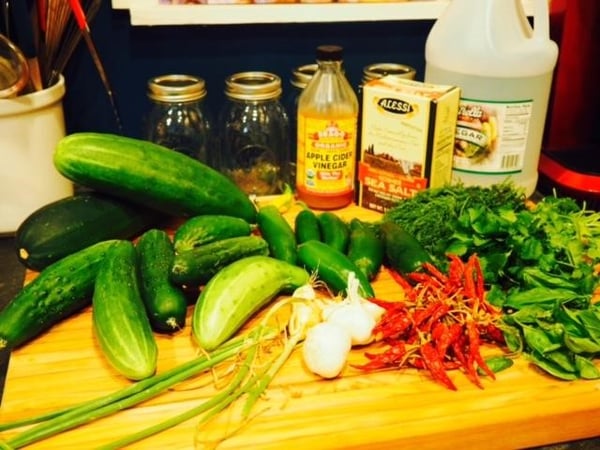
After some extensive research, I found that you only need a few things to create successful pickles:
- The right environment: Pickles need salt and vinegar to help preserve them. Being covered in a briny bath gives them their delicious flavor but also helps them last for a longer time. A general rule of pickle brine is equal parts water and vinegar, plus a good amount of salt - basically 1 cup water, 1 cup vinegar and 1-1½ tablespoons kosher or pickling salt brought to a boil. You can easily scale up from there. The kind of vinegar can vary widely as long as you are maintaining an acidic environment for the pickles. In order to experience the greatest variety in my pickle project, I did a batch with apple cider vinegar, a batch with plain old white vinegar and a batch with half of each. You could also try rice wine vinegar or flavored vinegars. Any variety of items can go into your brine to flavor it as well. Below I am preparing a brine of apple cider vinegar, chorizo spice and fresh oregano for the Mexican pickles. I’ve tossed some carrots and a jalapeno into the brine in order to blanch them so that they will be a little softer once pickled. Sugar can also be added to the brine if you prefer a sweeter pickle.
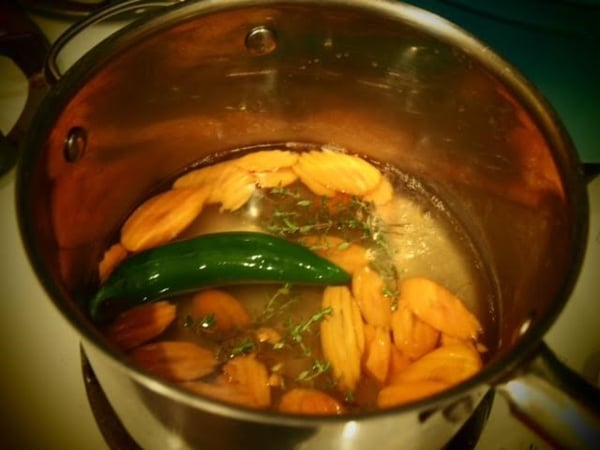
- Fresh, clean veggies: Vegetables fresh off the vine or straight from the farm are the best for pickling. The idea of pickling is to preserve things at the height of their deliciousness, so starting with the most natural and fresh produce you can find is advisable. All of your veggies need to be very clean as well. I was sure to thoroughly wash everything that was going into the pickles, being especially careful to cut the ends off of the cucumbers as they contain enzymes that can cause the pickles to turn mushy and even spoil.
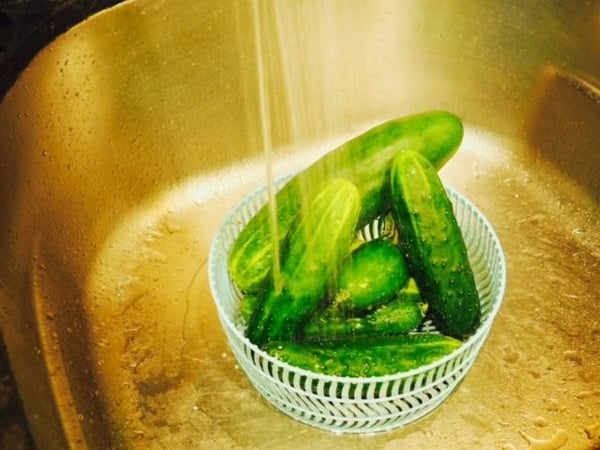
- Creativity: The fun thing about making pickles is that you can be entirely creative. Since cucumbers are so mild, they really can take on any flavors you choose to throw at them. A wide variety of other veggies can be pickled as well--carrots, onions, okra, corn and green beans are just a few of the options, so give them a try. Using handfuls of herbs, veggies and peppers from my garden and any other interesting things I could find in my fridge and pantry (dried Calabrian hot peppers, garlic, pink and black peppercorns, chorizo seasoning, grainy mustard, sliced carrots) I set about to make habanero dill pickles, Mexican-inspired pickles, carrots and onions, and some hot and spicy mustard pickles. Toss all of your herbs and spices into the jar. Slice your cucumbers into spears, chips, chunks or, if small enough, leave them whole (note that slices cucumbers will absorb the brine better and faster). Pack them in fairly tightly. Cover completely with your brine. Gently tap the jars to release any air bubbles and seal.
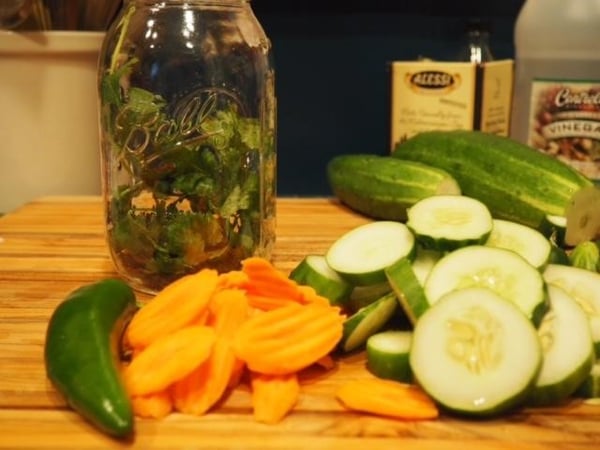
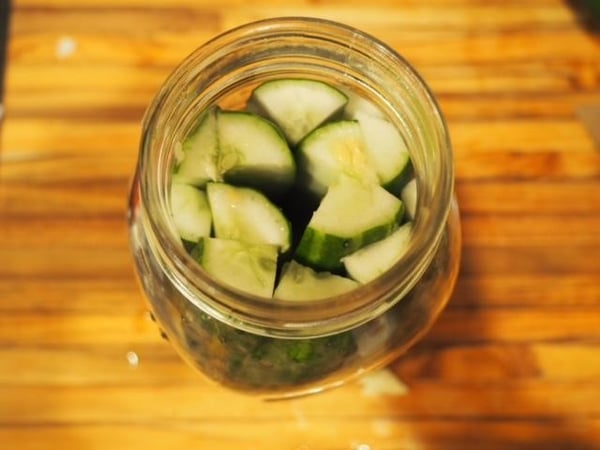
- Patience: This is obviously the hardest part of pickling making. After you’ve made all of your brines and, filled up all of your jars, you have to seal them and wait. If you’re making quick pickles and just putting them right into the fridge, you can probably sneak a taste the next day. But if you’re preserving them for the long haul, you’ve got to set them somewhere cool and dark and just wait it out. A couple weeks should allow the flavors to develop and will be well-worth the wait.
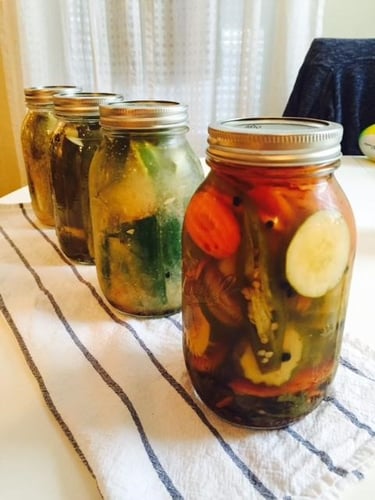
If you’ve ever wanted to learn how to pickle or, like me, are a serious pickle lover, come check out a few of The Chopping Block's great pickle and canning classes like Summer Canning and Preserving on August 28th at Lincoln Square and Get Pickled on August 30th at the Merchandise Mart. Don’t let the bounty of your summer garden go to waste!












